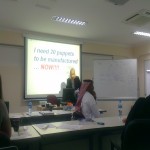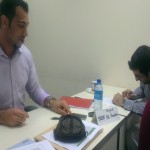Corporations like Apple, Samsung and Motorola; we hear rumors about them all the time. Like Apple with the iPhone 5, and Samsung with the new S3 and Motorola with the new Atrix 3.
I still can’t forget when everyone I know didn’t buy their iPhone 4 waiting for iPhone 5 and they were disappointed with the iPhone 4s. And now, the same thing is happening, people who are about to upgrade their phones and didn’t buy the S2 saying they’ll wait for the new Galaxy S3 and or iPhone 5.
Since I am obsessed with technology, and I keep up to date by buying the latest gadgets in the market. And while doing this course, during class when we were talking about product cycles and inventory management, I began wondering. At that very moment, I remember when I was thinking in my own world, when my teacher asked me a question that I didn’t pay attention to, and I had to ask her to repeat the question again. It was about the product life cycle and how short it is with technology.
Then during class, we started looking at the forecasting time horizon, during this part of the discussion; I was wondering what is their forecast period? Short?
We move on to the forecast methods, and during that very specific part I was trying to see which method they could possibly use? I know as the Professor said, forecasts are seldom perfect. However, they need some kind of forecast to keep the inventory right.
Immediately two blog posts of my colleagues came to my mind. First, Car dealerships with zero cars to sell. Corporations like Apple and Samsung do not want to be like those dealerships.
Second, Why Guess When You Can Forecast?
I quote from my colleague post:
“The mistake our team made was to purchase the product inventory from manufacturing companies without accurately forecasting the demand for those products.
The result? We ended up with far more inventory than we could sell. Food products are perishable; their expiration deadlines are much shorter than for other consumer goods. As those expiry dates approached, a considerable percentage of the inventory we had bought was wasted in our own warehouse. Needless to say, the company suffered some heavy losses.”
I think those corporations deal with this situation very frequently, in fact, the news of the S3 affected the iPhone 4s sales in some regions specifically in Bahrain. I do not have data to back my theory but I have seen this happening.
I wonder how does corporations like Apple deal with those rumors? How can they forecast the demand on the existing products when there is a rumor about a new product? I believe those corporations are living on the edge with their products and forecasts. They probably calculate the risk and add it to the product price to cover the forecast loses? I don’t know. But I can tell you this, it must be really hard.









